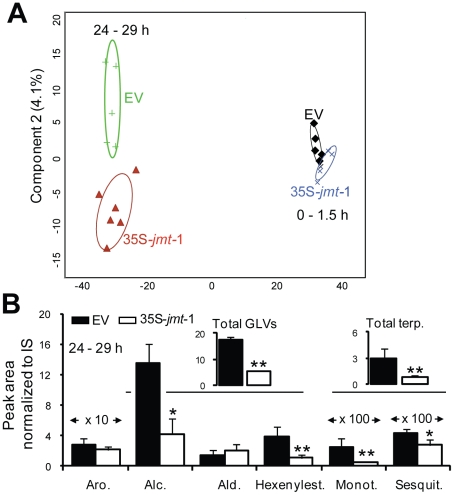Figure 5. W+OS-induced emissions of hexenylesters and terpenoids by 35S-jmt-1 plants are reduced in field-grown plants.
(A) Partial least-square discriminant analysis of 42 volatile organic compounds emitted from field-grown plants after wounding a leaf of 5 to 6 plants of each genotype with a fabric pattern wheel and applying Manduca sexta oral secretions (W+OS) revealed a clear distinction between volatile blends emitted by 35S-jmt-1 and empty-vector (EV) transformed plants 24–29 h after elicitation but not 0–1.5 h after elicitation. (B) Mean total and sub-total emissions (± SD, n = 5 to 6) for each volatiles classes emitted 24 to 29 h after W+OS elicitation. Volatile compounds are categorized as aromatic (Aro.) compounds, green leaf volatiles (GLVs) – alcohol (Alc.), aldehyde (Ald.), hexenylesters (Hexenylest.) and terpenoids (Terp.) – mono- (Mono.) and sesquiterpenes (Sesquit.). Mono- and sesquiterpenes as well as hexenyl-esters contributed the most to the genotype distinction afforded by principle component 2 (Fig. S3). Volatile emissions are expressed as peak areas standardized to the internal standard (IS) tetralin peak response. Asterisks indicate significant differences from EV plants (unpaired t-test; * P<0.05; ** P<0.001).

